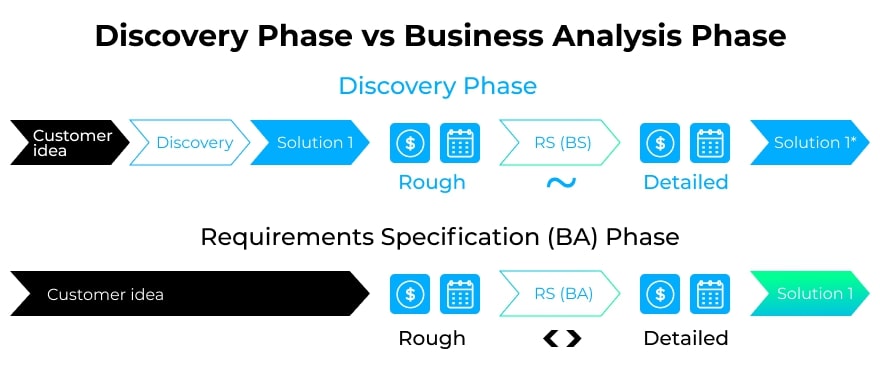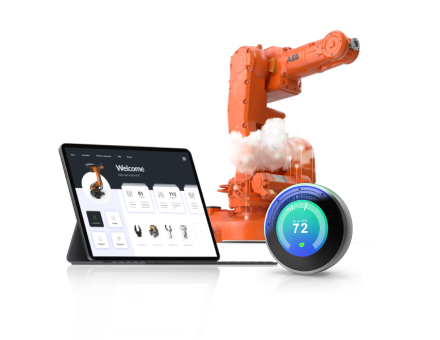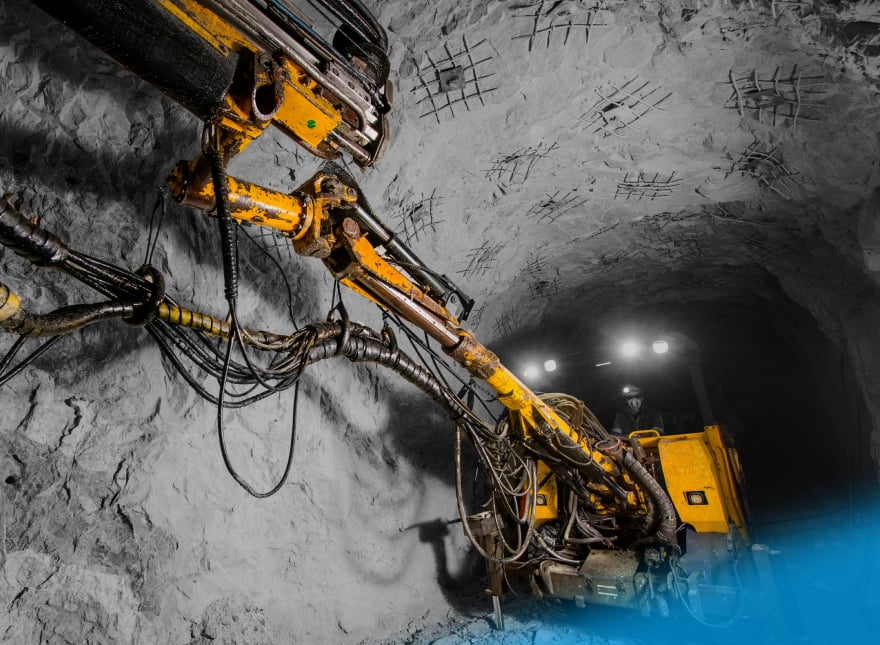Check out our latest blog article: From component to enterprise – modular robotics done right.
Getting the Most Out of IoT Projects with Proper Business Analysis

The Internet of Things is masterfully making the world a more connected place. According to statista.com, the total number of connected devices is projected to reach 75.44 billion units worldwide by 2025. Today IoT is a necessity, not an option. Competition-minded enterprises either adopt a data-driven approach, or drop out of the race. According to the IoT Signals report, 88% of companies surveyed said IoT was critical to their success.
However, the Internet of Things is still a novel concept. 25% of small and medium-sized enterprises (SMEs) are still unaware of IoT and its applications in business.

A company that embarks on an IoT project typically faces several challenges, including technology roadblocks, a lack of budget and staff, a lack of relevant expertise, and security issues.
There are also limitations outside of tech including poor planning, failure to establish a business case for an IoT solution, and insufficient collaboration between company stakeholders.
To solve these challenges and launch an IoT solution on time and in line with your business requirements, you should hire a skilled business analysis team.
The Role of Continuous Business Analysis in IoT Projects
Business analysis takes an essential place in the entire software development process—and IoT projects are no exception.
Business analysts (BAs) engage with executives and stakeholders to analyze a company’s business needs, and carry out a feasibility study to assess the viability of a business idea. They also gather requirements, and deliver data-driven ideas that prove the business value of a technology solution, and lay the basis for successful development and implementation. A detailed business analysis doesn't end with requirements gathering and functionality, it also includes the benefits and value the product poses, along with plausible use cases.
In most cases, BAs work together with the development team throughout the entire project cycle.
Such a tandem effort ensures an IoT solution is launched on time, on budget, and up to specification. The task of a business analyst in IoT projects is to clearly define how to achieve coherence between novel IoT technologies, customer expectations, and at the same time drive for operational efficiency and innovation.
IoT solutions incorporate hardware, connectivity technologies, back-end infrastructure, and user-facing apps. The development of these components requires continuous evaluation. Particular attention should be given to ongoing business analysis during the hardware design stage.
Compared to software development, modifying hardware is always a complex and time-consuming process involving many restrictions. Any functionality that requires adding a new hardware module should be well thought out beforehand. Otherwise, you can encounter the following problems:
- a need to modify PCB design
- a need to redesign the enclosure
- a need to fine-tune embedded systems
For example, you are working on an enterprise security system that incorporates connected video cameras. During the development process, you decide to enhance the cameras with object detection capabilities, which require a more powerful microprocessor unit (MCU). This would lead to a complete upgrade of the firmware that enables the smart functionality. The process can push the delivery date into the indefinite future, as you will have to go through the hardware design stages again. Also, you will have to order new hardware components for trial models (adding delivery time as well), go through the assembly process, test the samples, etc. With proper business analysis, detailed requirements, and a use case study, it’s not rocket science to mitigate those risks.
The Business Analysis Process Flow in IoT Projects
Before launching an IoT project, a skilled business analyst addresses the following significant issues:
- What is the primary goal of the IoT solution? What processes and operations are you looking to automate?
- What type of a data capturing gadget are you going to use? Is the gadget capable of running on a proper operating system and processing sensor data locally or should the data be sent to a cloud solution for further processing?
- Where will the data be stored and analyzed?
- What data transfer technologies are best to use in the solution?
- How can IoT-generated data be presented to end users? What user interfaces should be implemented on the device?
As IoT projects are typically innovative, it's recommended to proceed with a Discovery Phase after tackling the issues above.
This helps verify the concept, gather functional requirements to determine what the solution should do, and assess implementation feasibility, risks, functional health, and potential roadblocks.
Following the Discovery Phase, customers are provided with market and competitor analysis, a preliminary solution scope, mockups, and a ballpark estimate.

Next, the BA team solidifies the solution’s non-functional requirements to analyze how the system should function, prioritizes product features, participates in choosing the optimum tech stack, and prepares a detailed requirements specification that will be used to guide the IoT project development team.
Post-production maintenance is equally important.
Having a BA on your team will help analyze user feedback, correct faults in solutions, and make changes and enhancements.

Three Major Problems Business Analysts Solve in IoT Projects
Since most IoT projects are innovative by default, they require ongoing business analysis. Continuous BA efforts result in major cost and time savings.
By what means is this achieved?
1. Business analysts double-check if the proposed solution works as expected and determine how it should function by gathering the functional/non-functional requirements.
One of our clients, for example, was looking to design a smart dog collar. The collar is a multi-sensor wearable device that helps monitor a dog's location, fitness activity and behavior, and prevent car accidents and straying. One of the solution's functional components is a GPS module to track the pet’s location.
2. BA teams participate in defining the solution scope, tuning the tech requirements, and choosing the most cost-effective approach and tech stack.
The above-mentioned customer wanted to equip their collar with a high-quality camera to track pets in real time. Thorough business analysis showed that it was not feasible: the camera and additional hardware modules were simply too big—the collar would not be compact, the battery would discharge quickly, and the end solution would be both bulky and cost prohibitive. As a result, the client decided on three main features: geofences and location tracking, issuing voice commands via a microphone-speaker combo, and step count.
3. A business analyst helps get your team—production, IT, and business departments—on the same page.
Take, for instance, a factory that still uses outdated equipment. Factory workers might think their machines need to be equipped with temperature sensors to detect overheating and automatically turn off the equipment; the business department might suppose this is a waste of money. The IT department will be caught in the middle of the dilemma with different considerations—supporting the solution infrastructure. Business analysts can help bridge the misunderstanding gap among various company stakeholders, consult the IT department on how to craft a solution that requires minimum maintenance effort, and present an analysis of cost savings that the business department can agree to.
The Bottom Line
Business analysis in IoT projects is fundamental. When a skilled business analyst works through the project lifecycle, they help unlock the true potential of IoT, save development costs, make business processes more efficient, train your employees on the new technology (if needed), and obtain new income streams.
More articles on the topic






